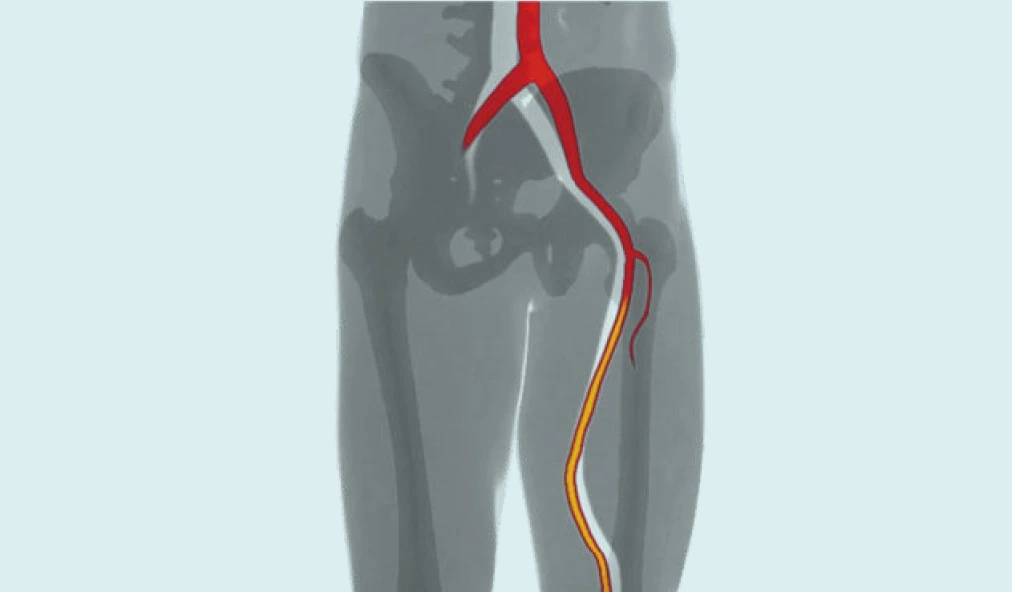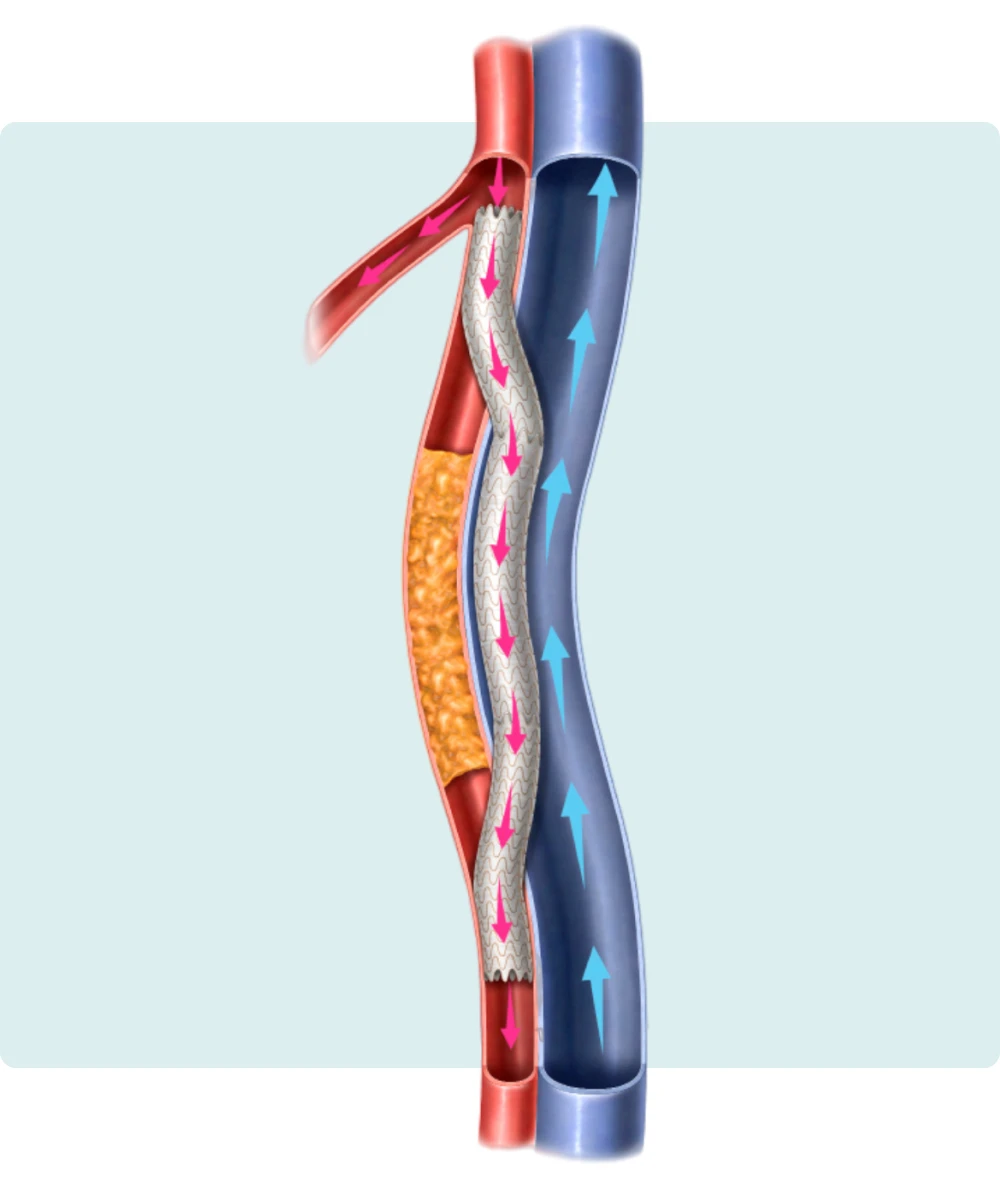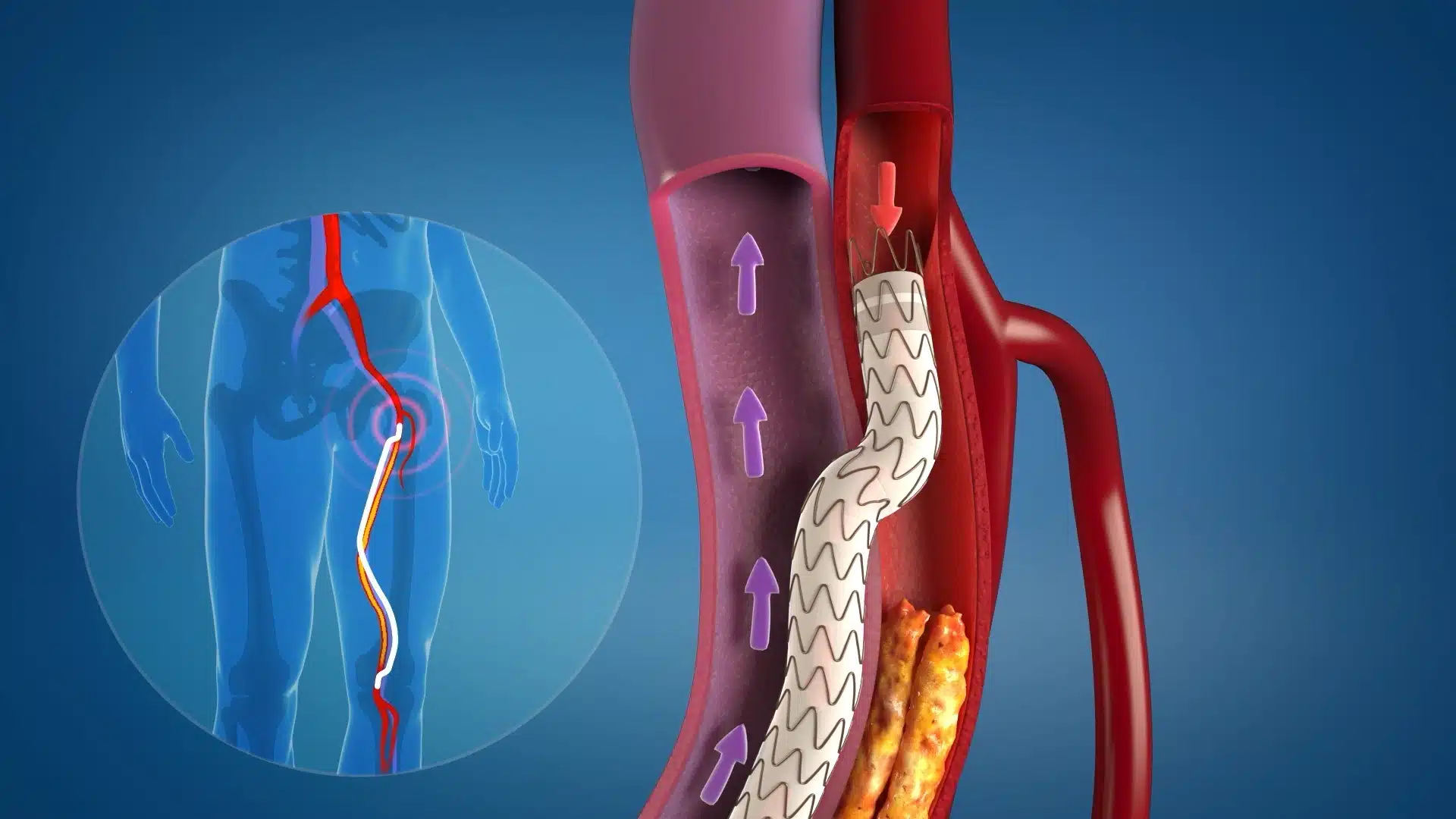Have you been living with Peripheral Artery Disease (PAD)?
Peripheral artery disease (PAD) is a common condition in which narrowed arteries reduce blood flow to the arms or legs and feet. The most common location for PAD is in the legs and feet.
In PAD, the legs or arms — usually the legs — don't get enough blood flow to keep up with demand. This may cause leg pain when walking, called claudication, and other symptoms.
In the US, approximately 8.5 million adults have lower extremity PAD.1
Risk Factors
Signs & Symptoms
What are my options if I have been diagnosed with PAD?
Early treatment and management for PAD focuses on lifestyle changes and includes exercising, eating healthy foods, and not smoking or using tobacco.
As your PAD progresses, your doctor may prescribe medicine as a treatment. And sometimes, a procedure or surgery is needed to treat complex PAD. Treatment options are dependent on the severity of the disease, your anatomy and risk factors. Your healthcare provider will help you understand and choose from options available.


A new, minimally invasive treatment option is now available to you…PTAB
The superficial femoral artery (SFA) supplies oxygenated blood to the entire lower leg. The popliteal artery is a continuation of the superficial femoral artery and is located behind the knee.
If your peripheral artery disease (PAD) has progressed, and specifically you have been diagnosed with complex PAD in the superficial femoral artery and popliteal artery, you may have a new alternative treatment option.
Percutaneous Transmural Artery Bypass (PTAB) Therapy is a minimally invasive procedure that utilizes endovascular techniques to create a bypass around the diseased area with comparable clinical outcomes to surgical bypass while avoiding surgical complications.
Talk with your doctor about your treatment options, including PTAB with the DETOUR System
Treatment options are evaluated based upon the severity of the disease, the anatomy and risk factors. PTAB is a novel alternative to open surgical bypass for patients with PAD. It is the first procedure that effectively bypasses long lesions and indicated for symptomatic patients with long, complex SFA disease.
PTAB therapy is available using the DETOUR system from Endologix and offers you an alternative treatment option with comparable outcomes to surgical bypass while avoiding surgical complications. Ask your doctor about this therapy today.

PTAB with the DETOUR System is clinically proven to be a safe and effective treatment for patients with long complex SFA disease.
DEMONSTRATED EFFICACY
DEMONSTRATED SAFETY
MINIMAL HOSPITAL STAYS
Find a Doctor

Have you been treated with PTAB therapy using the DETOUR system?
Detailed information on the PTAB procedure with the DETOUR system including what to expect after treatment is available in the patient brochure.
What to Expect

